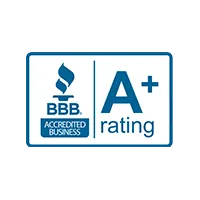Moving your business to a new location is a significant undertaking, and it can be both exciting and stressful. Whether you’re expanding, downsizing, or simply seeking a fresh start, an office relocation requires careful planning and execution to ensure a seamless transition. In this comprehensive guide, we’ll provide you with valuable tips and strategies to make your office relocation as smooth as possible. From planning and organization to selecting the right moving company, we’ve got you covered.
Start Early: The Importance of Planning
One of the most crucial aspects of a successful office relocation is early planning. Starting the process well in advance allows you to address potential challenges and minimize disruptions to your business operations. Here’s what you should consider:
Create a detailed timeline: Outline every task that needs to be completed before, during, and after the move. Assign responsibilities and set deadlines to keep the project on track.
Establish a budget: Determine your relocation budget, including moving costs, lease or purchase expenses, and any necessary renovations or upgrades at the new location.
Conduct a needs assessment: Identify the specific requirements of your new office space in terms of size, layout, and amenities. This will help you choose a location that suits your business needs.
Notify stakeholders: Inform employees, clients, suppliers, and other relevant parties about the upcoming move. Clear communication is key to ensuring a smooth transition
Assemble a Relocation Team
To successfully manage an office relocation, it’s essential to assemble a dedicated team to oversee the process. Depending on the size of your business, your team may include:
Project manager: The point person responsible for coordinating all aspects of the move, from logistics to communication.
IT specialist: Ensures a seamless transition of your technology infrastructure, including computers, servers, and phone systems.
Facilities manager: Coordinates the setup and design of your new office space, including furniture and equipment placement.
HR representative: Helps employees with any questions or concerns related to the move, such as commuting and workspace arrangements.
Inventory and Streamline
Before packing and moving, take the opportunity to declutter and streamline your office belongings. Conduct an inventory of your furniture, equipment, and supplies to determine what should be moved, what can be sold or donated, and what should be replaced. This not only reduces the cost of your move but also ensures you start fresh in your new location with only what’s necessary.
Choose the Right Moving Company
Selecting a reliable and experienced moving company is paramount to a successful office relocation. Here’s how to make the right choice:
Research and obtain multiple quotes: Reach out to several reputable moving companies to compare quotes and services. Ask for referrals and read reviews to gauge their track record.
Verify credentials: Ensure the moving company is properly licensed, insured, and experienced in commercial relocations.
Discuss logistics: Have a detailed conversation about your specific needs, including the size and scope of the move, special equipment requirements, and any unique challenges at your current or new location.
Plan for downtime: Work with the moving company to schedule the move during a time that minimizes disruption to your business operations, such as evenings or weekends.
Packing and Labeling
Efficient packing and labeling are essential for a smooth office relocation. Here’s how to tackle this aspect:
Use a color-coding system: Assign specific colors to different areas or departments in your office. This makes it easy for movers to identify where each box should go in the new space.
Pack strategically: Start with non-essential items and work your way to essential items. Clearly label each box with its contents and destination.
Create an inventory list: Maintain a detailed inventory of all your items to ensure nothing is lost during the move.
Technology Transition
Moving your IT infrastructure is a critical aspect of any office relocation. Here are some key steps to consider:
Back up your data: Ensure all critical data is backed up securely before disconnecting and moving any computer systems or servers.
Work with your IT specialist: Collaborate closely with your IT team or specialist to plan the orderly disconnection, transport, and reconnection of all technology equipment.
Update contact information: Ensure all online listings, email signatures, and social media profiles reflect your new location and contact information.
Notify Stakeholders and Clients
Effective communication is vital when relocating your business. Keep your employees, clients, suppliers, and other stakeholders informed throughout the process. Here are some communication strategies:
Send regular updates: Use email, newsletters, or an internal communication platform to provide updates on the relocation’s progress and any changes in business operations.
Update your website and social media: Clearly state your new address, contact information, and any temporary changes in services or availability.
Notify clients individually: Reach out to key clients personally to inform them of your upcoming move and reassure them that your commitment to serving their needs remains unchanged.
The Day of the Move
On moving day, ensure everything goes smoothly with these tips:
Be present: Have key team members on-site to oversee the move, answer questions, and make decisions as needed.
Monitor the process: Keep an eye on the loading and unloading of your belongings to ensure everything is handled with care.
Conduct a walkthrough: Before leaving your old location, perform a final walkthrough to confirm nothing has been left behind.
Settling Into Your New Space
Once you’ve arrived at your new office, there are several steps to ensure a seamless transition:
Unpack systematically: Prioritize unpacking essential items to get your business up and running quickly.
Arrange furniture and equipment: Ensure that workstations and equipment are set up ergonomically and efficiently.
Update signage: If applicable, update exterior and interior signage to reflect your new location.
Test all systems: Verify that phone lines, internet connections, and other essential systems are functioning correctly.
Post-Move Evaluation
After you’ve settled into your new office, take the time to evaluate the entire relocation process. This step can help you identify any lessons learned and areas for improvement in case you face another office move in the future.
An office relocation can be a complex and challenging endeavor, but with careful planning and execution, it can also be a transformative opportunity for your business. By starting early, assembling a dedicated team, and working closely with a reliable moving company, you can minimize disruptions and ensure a seamless transition to your new office space. Remember that clear communication with employees and stakeholders is essential throughout the process, and don’t forget to celebrate your successful move and the exciting new chapter it represents for your business.








